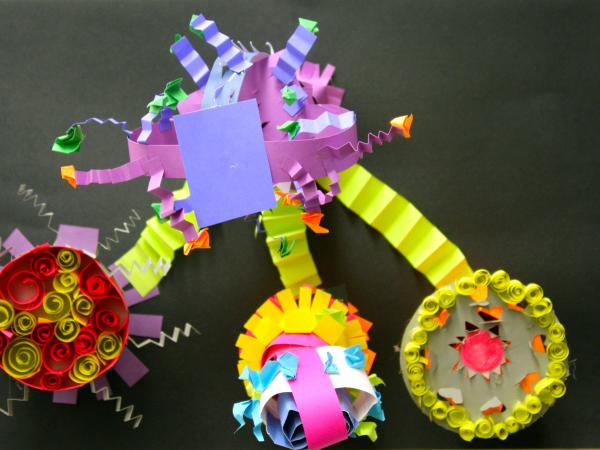Day 1 – Introduction
Introduce the project with a slide show (see additional resources)
Questions to ask during the slide show include:
- What do you see?
- How do you think the artists created this art?
- Why do you think the artists created this art?
- How do you think these artists used science in their art?
Explain the creative process for the project
Demonstrate paper manipulation techniques
- Kirigami (decorative paper cutting and folding)
- Quilling (rolling and gluing paper)
If time remains, students can experiment with paper techniques
Day 2 – Artmaking
Divide students into small groups based on compound /molecules and the number of elements in each
Some students can work alone if the atom has only one element
Students should begin designing and sketching their sculpture
Day 3 – Artmaking
Discuss/demonstrate how to safely use an X-ACTO knife and glue gun
Students should start working on creating their sculptures, using the paper manipulation techniques
Students should refer to their sketches when creating their elements
Day 4 – Artmaking
Students should work on creating their sculptures
Encourage the students to finish their sculptures
Day 5 – Artmaking
Students should finish their elements
Students should work in their groups to arrange and connect their sculptures on the poster board
Students should use paper manipulation techniques to connect their sculptures
Remind students to put their names on the back of the poster board
Day 6 – Presentations
Student groups should prepare to present their sculptures to the class
Students should present their sculptures to the class
At the end of the class, the teacher can collect student work to display in the hall
Day 7 – Artist Statements
Students should write their individual artists statements

0 comments
Leave a Comment